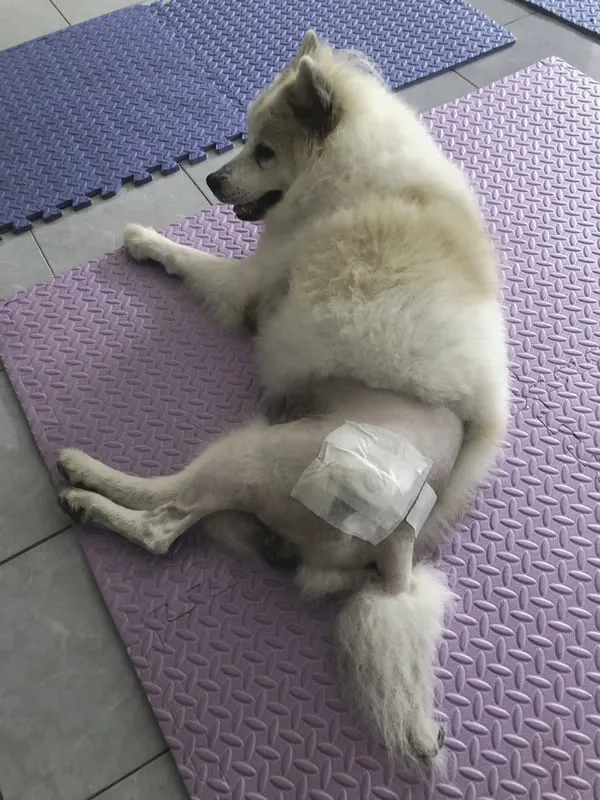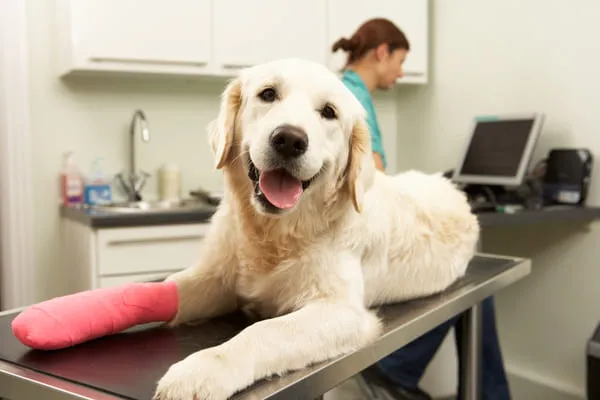The thought of your beloved dog facing a health emergency can be incredibly distressing. Beyond the emotional toll, the financial burden of veterinary treatment can often exceed what pet owners anticipate, sometimes leading to heartbreaking decisions about necessary, even life-saving, procedures. In the U.S., the average cost of canine surgery is on the rise annually, with procedures ranging from $500 to $7,000. This increase is driven by factors such as the rising price of pharmaceuticals and the ongoing investment in research, advanced technologies, and cutting-edge equipment. To navigate the potential emotional and financial impacts of pet ownership, it’s crucial to have a clear understanding of how much common surgeries can cost. While an exact figure for your specific pet and location is impossible to provide, this guide outlines the average prices for some of the most common and expensive surgical procedures.
 dog that came out of hip surgery
dog that came out of hip surgery
Understanding these potential expenses can help you better prepare for your pet’s healthcare needs. For instance, knowing the average vet bills for a cat or the puppy first vet visit cost can set a baseline for expected veterinary expenses.
1. Total Hip Replacement
Hip dysplasia is a prevalent condition, particularly among larger dog breeds. A total hip replacement, which involves replacing the hip joint’s ball and socket, can significantly restore a dog’s range of motion and alleviate pain. This surgery is also a viable option for managing arthritis or treating certain fractures. The procedure is analogous to human hip replacement, where the femoral head (the ball) and the acetabulum (the socket) are substituted with prosthetic implants. The ball is typically made from a cobalt-chromium metal alloy, while the socket is crafted from high-molecular-weight polyethylene plastic, secured with bone cement. The success rate for total hip replacement in dogs is high, with over 90% achieving a full recovery. However, the recovery process can be lengthy and expensive, especially if both hips require replacement, which is common with hip dysplasia. An alternative to total hip replacement is a femoral head ostectomy (FHO), a salvage procedure that can manage pain when a total hip replacement isn’t feasible.
- Average surgery cost: $7,000 per hip (implants alone constitute 35% of this cost).
2. Gastrointestinal Obstruction (Foreign Object Removal)
Dogs, especially puppies, have a tendency to ingest objects, regardless of how diligently owners try to keep their homes secure. This habit frequently leads to foreign objects blocking their digestive systems. Common culprits include dog toys, stones, socks, and underwear. Emergency surgery is often required to remove these obstructions and prevent fluid loss, dehydration, and life-threatening intestinal damage. Without prompt veterinary intervention, a dog’s stomach or intestinal walls could perforate, leading to sepsis. Gastrointestinal obstructions can also arise from intussusception (where intestinal segments telescope into one another) or torsion (twisting of the intestines). Tumors can also cause GI obstructions, particularly in senior pets.
If you witness your dog swallowing an object, seek immediate veterinary attention. In some instances, vomiting can be induced to help expel the item. If you haven’t seen them swallow anything but suspect an obstruction, symptoms may include vomiting, dehydration, poor appetite, lack of bowel movements, or noticeable abdominal pain. If you suspect an obstruction, do not offer your dog any food until they have been examined by a veterinarian, and do not attempt to induce vomiting at home. While veterinarians can sometimes remove small objects from the stomach via endoscopy, most cases necessitate major surgery. Once the object is removed and the incision is closed, your dog may be able to resume normal activities relatively quickly, though some cases require hospitalization and longer recovery periods.
- Average surgery cost: $3,000 to $7,500.
3. Tibial Plateau Leveling Osteotomy (TPLO)
An active dog’s zest for running, jumping, and playing can sometimes lead to injuries like a torn cranial cruciate ligament (CCL). Unlike in humans, where trauma is often the cause, most CCL injuries in dogs stem from ligament degeneration. This common condition results in knee joint instability, causing the tibia (shin bone) to shift forward relative to the femur (thigh bone), leading to lameness. Tibial Plateau Leveling Osteotomy (TPLO) is a surgical procedure designed to stabilize the knee and help dogs regain comfortable mobility. The surgery involves altering the angle of the tibial plateau (the top of the shin bone) through a curved cut, rotating the bone, and then stabilizing it with a plate and screws. Following TPLO, dogs typically experience full recoveries with a positive long-term prognosis, often returning to their pre-injury activity levels after rehabilitation.
- Average surgery cost: $4,500 to $7,500.
 large dog coming out of paw surgery
large dog coming out of paw surgery
Proactive care, such as understanding the annual cost of owning a cat or budgeting for potential initial costs of getting a puppy, can help mitigate financial surprises.
4. Intervertebral Disc Disease Surgery (IVDD)
Intervertebral discs in dogs can become compressed or even extrude into the spinal canal, causing pain and nerve damage. This degenerative or traumatic process leads to painful bulging, ruptured, herniated, or slipped discs. Surgical intervention may be necessary to remove the diseased material and alleviate symptoms. While any dog can be affected, this condition is more common in smaller breeds with longer backs, such as Dachshunds, French Bulldogs, Basset Hounds, Shih Tzus, and Pekingese. IVDD surgery techniques vary depending on the severity of symptoms and the location of the herniated disc, often involving the removal of diseased disc material through an incision in the spine. The recovery period can be lengthy, ranging from six to eight weeks to several months, before a dog returns to their usual activity levels. If a herniated disc is not treated promptly, some dogs may not regain full function post-surgery, with the outcome largely dependent on the condition’s severity prior to the operation. Potential complications include a lack of functional recovery, spinal cord damage, infections, and hemorrhage.
- Average surgery cost: $5,500 to $10,000.
5. Gastropexy
Gastric dilatation and volvulus (GDV), commonly known as bloat, is a life-threatening condition where a dog’s stomach twists and distends. This can be triggered by factors like a full stomach due to excessive gas, a large meal, or copious water intake. Certain breeds are predisposed to bloat, developing it even without these contributing factors. When the stomach twists and bloats, it exerts pressure on the diaphragm and major blood vessels, leading to breathing and circulatory problems, which can be fatal if not treated promptly. GDV is more common in larger, barrel-chested breeds like Great Danes, German Shepherds, Saint Bernards, Standard Poodles, and Old English Sheepdogs.
Prophylactic (preventative) gastropexy is often recommended for young, healthy dogs of GDV-prone breeds to significantly reduce their risk. This procedure surgically attaches the stomach to the abdominal wall to prevent twisting and can be performed concurrently with spaying or neutering. While gastropexy was once a major abdominal operation, it is now frequently performed laparoscopically, involving smaller incisions, less pain, and fewer complications. Gastropexy is always performed as an emergency operation for dogs presenting with GDV, as the risk of recurrence without it exceeds 50%.
- Average cost for prophylactic surgery: $1,400.
- Average cost for emergency surgery: $4,000 to $8,000.
A helpful mnemonic for pet owners to remember the warning signs of bloat is B.L.O.A.T.: Breathing problems, Large stomach, Overproduction of saliva, Agitation, Trying to vomit.
Protecting Your Pet
The value of protecting your pet with pet insurance becomes evident when considering these potential costs. Despite 53% of American households owning a dog, only an estimated 2% of dogs are adequately insured. With one in three dogs experiencing at least one medical emergency in their lifetime, countless pet owners face distressing financial decisions.
Purchasing coverage while a dog is young typically results in lower upfront costs and more comprehensive coverage options. While securing pet insurance for a young, healthy pet is wise, all dogs can benefit from extensive coverage.
